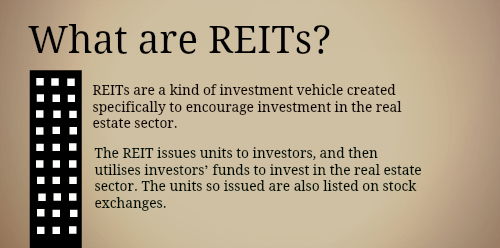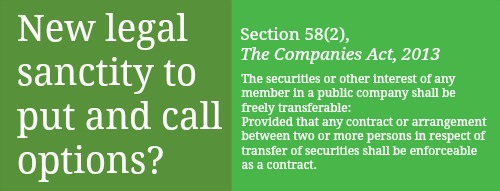 In July and September last year, the Securities Laws (Amendment) Ordinance, 2013 (“the Ordinance”) was promulgated to amend three key components of the securities law statutory framework—the Securities and Exchange Board of India Act, 1992, the Securities Contracts (Regulation) Act, 1956, and the Depositories Act, 1996.
In July and September last year, the Securities Laws (Amendment) Ordinance, 2013 (“the Ordinance”) was promulgated to amend three key components of the securities law statutory framework—the Securities and Exchange Board of India Act, 1992, the Securities Contracts (Regulation) Act, 1956, and the Depositories Act, 1996.
The Ordinance was expected to enable the Securities and Exchange Board of India (“SEBI”) to effectively enforce the existing statutory and regulatory framework. We have discussed the provisions of the Ordinance here and here.
Despite being promulgated twice however, the Ordinance lapsed earlier this month and now cannot be reissued. What does this mean for the SEBI?
Diminished powers
Sections 10, 15, and 21 of the Ordinance had enhanced the power of the SEBI to take strict action against defaulters, including:
– attachment and sale of movable property;
– attachment of bank accounts;
– attachment and sale of immovable property;
– arrest and detention in prison; and
– appointing a receiver for the management of the movable and immovable properties.
 Exercising the new powers it had been seeking for a long time, the regulator passed over 300 attachment orders for recovering close to Rupees 1,700 crore from defaulters. The lapsing of the Ordinance will not affect these orders, as they were made while the Ordinance was still in effect. However, the SEBI cannot pass such orders any longer even for defaults that may have occurred while the Ordinance was still in effect. While SEBI can adjudicate and declare fines and penalties against defaulters, they can no longer proceed against the property of defaulters or carry out arrests for non-compliance with orders.
Exercising the new powers it had been seeking for a long time, the regulator passed over 300 attachment orders for recovering close to Rupees 1,700 crore from defaulters. The lapsing of the Ordinance will not affect these orders, as they were made while the Ordinance was still in effect. However, the SEBI cannot pass such orders any longer even for defaults that may have occurred while the Ordinance was still in effect. While SEBI can adjudicate and declare fines and penalties against defaulters, they can no longer proceed against the property of defaulters or carry out arrests for non-compliance with orders.
New regulations
The Ordinance gave additional powers to the SEBI including the power to conduct search and seizure of persons and premises. The SEBI could also call for information and records relevant for information, including telephone call data records. Pursuant to the establishment of these new powers, the SEBI had, earlier this month, also issued the SEBI (Procedure for Search and Seizure) Regulations, 2014. Naturally, now that the SEBI no longer has the powers of search and seizure (more about those powers here), these regulations are no longer relevant.
At the same time that the search and seizure regulations were issued, SEBI had also issued the SEBI (Settlement of Administrative and Civil Proceedings) Regulations, 2014. These regulations established a proper procedure for cases involving settlement, including eligibility for settlement, application and so on. The SEBI Chief has expressed the view that the settlement regulations mentioned above were issued while the Ordinance was in effect, and therefore, they continue to have the force of law.
My view is that while the SEBI Chief may be right about any settlements made under the regulations while the Ordinance was still in effect, the argument cannot be extended to mean that the SEBI has the power to issue settlement orders under the regulations now. The Preamble to the regulations clearly states:
“In exercise of the powers conferred by section 15JB of the Securities and Exchange Board of India Act, 1992, section 23JA of the Securities Contracts (Regulation) Act, 1956 and section 19-IA of the Depositories Act, 1996 read with section 30 of the Securities and Exchange Board of India Act, 1992, section 31 of the Securities Contracts (Regulation) Act, 1956 and section 25 of the Depositories Act, 1996, the Securities and Exchange Board of India hereby makes the following regulations to provide for the terms of settlement and the procedure of settlement and matters connected therewith or incidental thereto, namely:”
The sections mentioned in the initial part of the Preamble were all inserted by the Ordinance, and since the Ordinance has now lapsed, these regulations cannot be made applicable to proceedings against defaulters. The SEBI should issue a revised set of regulations for now, without making reference to the amended sections introduced by the Ordinance.
The lapsing of this Ordinance is a setback to the growth of the SEBI, which had been armed to cope with the large number of securities laws defaulters in our country. We can only hope that the positive effects of this Ordinance are not rendered meaningless and that an amendment is enacted giving the SEBI the necessary powers to effectively regulate our markets.
(Deeksha Singh is part of the faculty on myLaw.net.)







